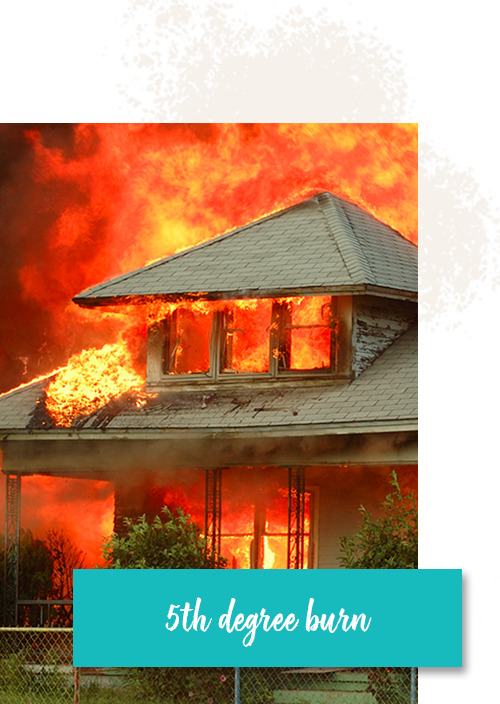What are Fifth-Degree Burns?
While first-, second-, and third-degree burns are widely recognized, many people are not aware of the more severe types of burn damage. Any damage past a third-degree burn is often known as a fourth-degree burn, but there are categories that break down distinguishing factors of injuries further.
Fourth-degree burns are often fatal, though recent developments in medical technology have made it possible for victims of these burns to survive if they receive immediate medical treatment. Fifth-degree burns cause even deeper damage, making it much harder for victims to survive.
If you or a loved one have suffered a burn injury, we can help. Call our Phoenix personal injury lawyers today for a free consultation.
What are the Causes of Fifth-Degree Burns?
Fifth-degree burns share many of the same causes as fourth-degree burns. Someone is most likely to see these injuries in a situation that exposes the skin to a heat source long enough that it continuously burns through several layers of skin.
In accidents at home, people tend to suffer fourth-degree burns due to prolonged exposure to house fires, cooking accidents, and faulty appliances. In all these events, victims of fifth-degree burns have come into contact with high sources of heat and energy that damage several layers of skin and start to work their way through to layers of muscle. Fifth-degree burns can also occur due to severe car accidents, explosions, or building fires.
Professions that are at a high risk for fifth-degree burns include emergency personnel (such as firefighters), electricians, food service, manufacturers, scientists, and medical workers.

What Are the Symptoms of Fifth-Degree Burns?
The different degrees of burns refer to how many layers of skin suffer damage in the injury. First-, second-, and third-degree burns all refer to damage in the corresponding layers of skin. Once you start hitting fourth-degree burns, all layers of skin are gone, and the injury starts to damage what lies beneath. Because nerve endings suffer damage in third-degree burns, a victim of a fifth-degree burn will not feel pain from his or her wound.
A fifth-degree burn will extend past the fat and start to burn into and through the muscle. In these burns, you may be able to see bones and some signs of damage to them. Often, charred skin and other debris are present in the burn area. Any damaged areas cannot naturally recover, and any skin, nerves, and muscles will suffer permanent damage.
Burns of this degree cause far more than damage to the immediate area. When suffering a burn, the human body’s inflammatory response kicks in, trying to contain the damage and help the body recover.
Inflammatory Response in Overdrive
When faced with a larger and more severe burn, the inflammatory response goes into overdrive, often inducing a drop in blood pressure that leads to shock. Edema can also occur when fluids become trapped in the body, resulting in swelling. An overreactive inflammatory response in combination with edema can cut off oxygen to different parts of the body, resulting in organ failure.
As with any other level of burn, infection is a great concern with so much exposed tissue. Infections also take up the body’s resources and can spread to organs, where they can cause further problems.
What Are Treatments for Fifth-Degree Burns?
Fifth-degree burns are very serious and mostly fatal. In very rare cases, a victim of such a burn may survive, but the burned area will require amputation. He or she will also require extensive recovery time, both physically and mentally.
Because of the high mortality rate of fifth-degree burns, the term is not easily recognizable to many people. However, those who are seeking compensation for a wrongful death related to burn injuries may come across this burn type through the case proceedings. Medical researchers are conducting ongoing studies to determine more effective treatments for more severe burns.
If you or a loved one has been severely burned due to another’s negligent actions, the Phoenix burn injury lawyers at Begam Marks & Traulsen, P.A. are here to help. Contact us online or call at (602) 254-6071 to discuss your case with an experienced attorney today.
Additional Burn Information and Resources
For additional information regarding the varying degrees of burns, please visit the following pages: first-degree burns, second-degree burns, third-degree burns, fourth-degree burns, and sixth-degree burns. For information on other burn types, such as burn injuries sustained by railroads, please visit our practice area page.

